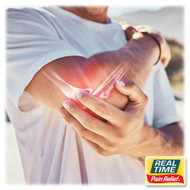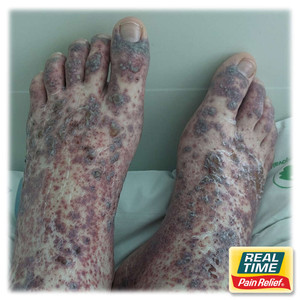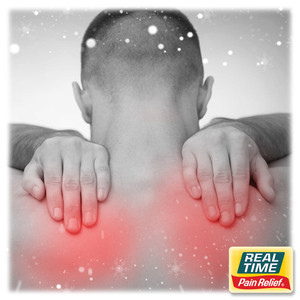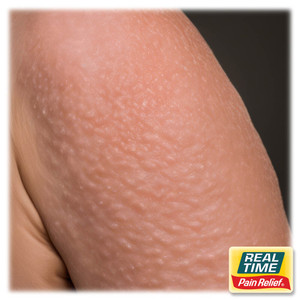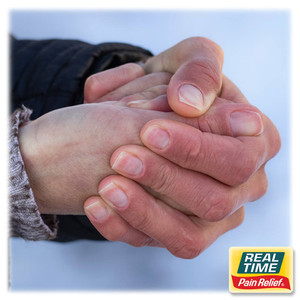Soothing Overused Joints After Summer Sports and Travel
Posted by Dennis R Escalera on 31st Aug 2025
Introduction
After a season full of summer hikes, beach games, backyard projects, and road trips, it’s no surprise that many people experience lingering joint discomfort. Whether from overuse, repetitive motions, or simply doing too much too soon, the joints can take a beating during the warmer months. Now, as routines settle and the season shifts, it’s the perfect time to give your joints the recovery and attention they deserve.
In this article, we’ll explore how summer activities impact joint health, what overuse really means, and how to soothe and support your joints naturally—especially using topical pain relief made with nature’s ingredients.
How Summer Activities Stress the Joints
During the summer, we tend to move more—both recreationally and for chores:
- Hiking or walking longer distances on uneven terrain
- Biking, swimming, or playing sports
- Lifting coolers, lawn equipment, or luggage
- Standing for hours at festivals or barbecues
- Sitting in cramped spaces during travel (car, plane)
While these activities are good for staying active, they also increase wear and tear on weight-bearing joints like the knees, hips, and lower back, as well as mobile joints like the shoulders and wrists. Repetitive motion, uneven surfaces, improper footwear, and overexertion can all lead to inflammation, soreness, or minor joint injuries.
Understanding Overuse Injuries
An overuse injury happens when repetitive stress is applied to a joint or muscle group without enough time to heal. It’s especially common in active people who suddenly increase their activity level—like going from sedentary desk work to daily summer sports.
Common overuse joint issues include:
- Tendinitis (inflammation of tendons)
- Bursitis (inflammation of cushioning sacs near joints)
- Strained ligaments or joint capsules
- Cartilage irritation from high-impact movements
These issues might not feel serious at first, but over time, they can cause persistent discomfort or even chronic pain if not addressed.
Key Areas Affected by Summer Strain
1. Knees
Whether hiking, running, or climbing stairs, knees absorb a lot of impact. Uneven ground and sudden stops can lead to patellar tendinitis, ligament strain, or cartilage wear.
2. Hips and Lower Back
Long walks, lifting luggage, and hours of standing or driving can fatigue the core muscles and overwork hip joints. Weak glutes or tight hip flexors also contribute to joint stress.
3. Shoulders and Elbows
Throwing frisbees, swimming, playing catch, or even gardening can lead to rotator cuff inflammation or tennis elbow.
4. Ankles and Feet
Poor arch support, excessive walking, and long days on your feet can aggravate the ankle joints and cause post-tibial tendon strain or plantar stress.
Post-Summer Joint Recovery Essentials
1. Gentle Movement and Stretching
Start with low-impact activities like walking, yoga, or swimming to maintain joint mobility without stressing tissues further. Focus on dynamic stretches for warmups and static stretches afterward.
Examples:
- Hamstring and quad stretches for knees
- Hip flexor stretches to loosen the pelvis
- Shoulder rolls and chest openers
- Calf stretches for ankle support
2. Ice and Elevation
For inflamed joints, apply ice packs for 15–20 minutes at a time. Elevate the affected limb to reduce swelling. This is especially useful after travel or long periods on your feet.
3. Compression and Support
Compression sleeves or braces can stabilize joints during recovery. They help improve circulation and reduce swelling in areas like the knees, elbows, or wrists.
4. Adjust Your Routine
Let your joints heal by reducing high-impact activities temporarily. Opt for cross-training or swap hiking with cycling, or jogging with swimming.
Topical Pain Relief with Nature’s Ingredients
One of the safest and most effective ways to ease joint pain after summer strain is using topical creams or lotions that contain nature’s ingredients. These products offer targeted relief without the side effects of oral medications.
How Topical Creams Help
- Absorbed directly into the affected area
- Reduce local inflammation and swelling
- Soothe soreness and stiffness
- Improve circulation to promote healing
Key Nature-Based Ingredients for Joint Relief
|
Ingredient |
How It Helps |
|
Arnica Montana |
Known for reducing bruising, inflammation, and joint soreness. Ideal after strenuous activities. |
|
Menthol |
Creates a cooling effect that desensitizes pain receptors and temporarily relieves aching joints. |
|
Capsaicin |
Derived from chili peppers, it blocks pain signals from reaching the brain. Good for chronic joint pain. |
|
Turmeric (Curcumin) |
Has anti-inflammatory properties that help ease swelling and joint stiffness. |
|
Boswellia Serrata |
A resin extract that helps reduce cartilage breakdown and supports joint comfort. |
|
Aloe Vera |
Soothes irritated skin and muscles and works well in combination with other active ingredients. |
When applied directly to the affected joints, these ingredients provide a fast-acting, localized solution for pain relief—without impacting the digestive system or causing drowsiness.
When to See a Doctor
While most post-summer joint discomfort improves with rest and topical care, you should consult a medical professional if you experience:
- Swelling that lasts more than a week
- Pain that worsens with time or interferes with sleep
- Audible joint popping or locking
- Fever or redness (may indicate infection or inflammation)
Lifestyle Tips to Support Joint Recovery
- Hydrate well to maintain joint lubrication
- Maintain a healthy weight to reduce joint pressure
- Incorporate anti-inflammatory foods like salmon, leafy greens, and berries
- Prioritize sleep to help the body repair soft tissues
- Massage gently with a topical cream after daily movement
Conclusion
Post-summer joint pain doesn’t have to linger into fall. By recognizing the signs of overuse, incorporating gentle recovery habits, and using pain relief products made with nature’s ingredients, you can help your joints bounce back and feel your best—just in time for the cooler seasons ahead.
References
- Cleveland Clinic – Arnica montana: Uses, benefits & risks Lippincott Journals+15Cleveland Clinic+15Wikipedia+15
- MDPI systematic review – Effects of Arnica on Traumatic Injuries and Inflammatory Conditions (published Plants, 2024) MDPI+1
- PubMed/Eur J Sport Sci – Topical Arnica to reduce pain and DOMS (Pumpa et al., 2014) PubMed+2Wiley Online Library+2
- Versus Arthritis – Topical capsaicin four times more effective for osteoarthritis pain Health+15versusarthritis.org+15ScienceDirect+15
Systematic review (PubMed) – Topical capsaicin moderate efficacy for chronic muscle/neuropathic pain PMC+1

